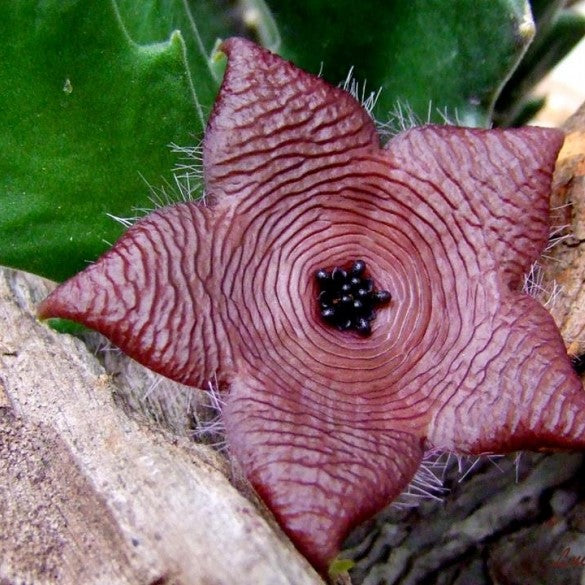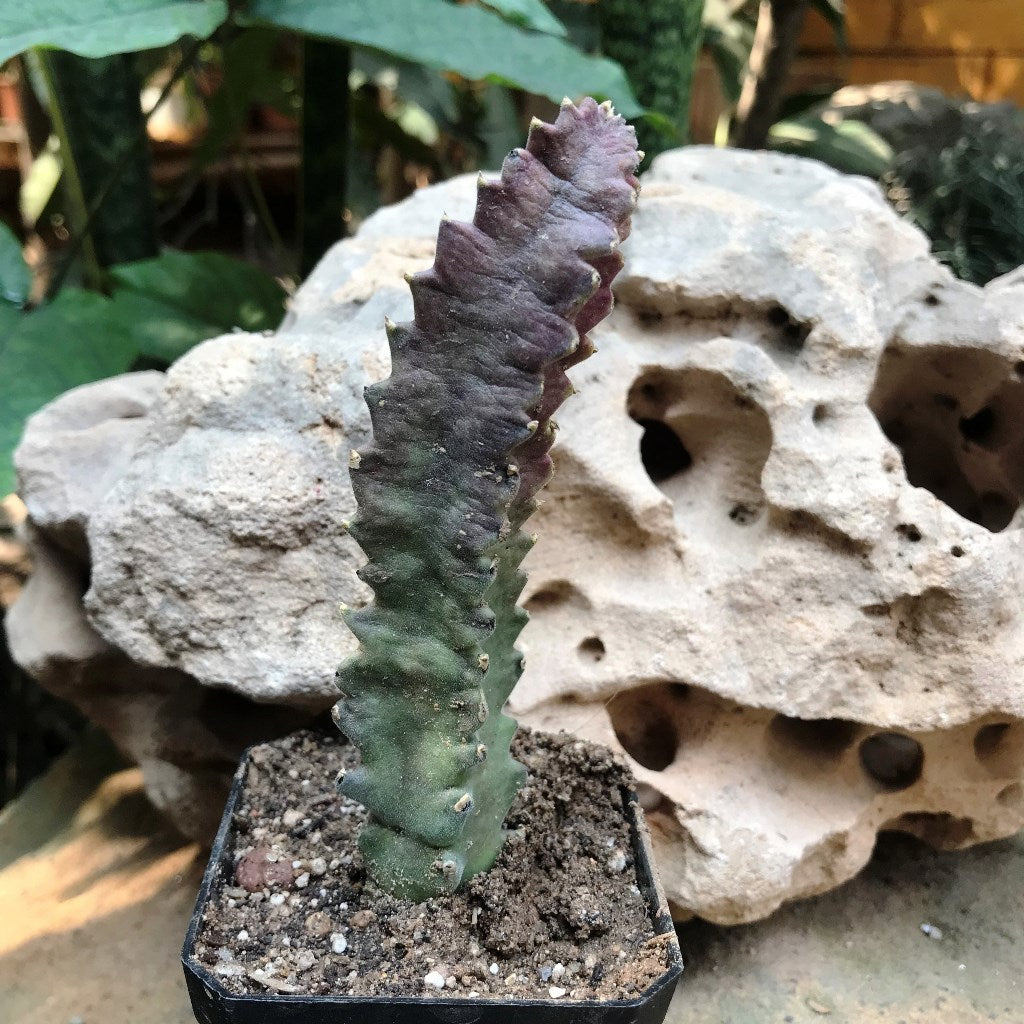Maroon Cup Starsh
Family
Apocynaceae
Native: Swaziland
Description
Stapelia clavicorona consist of 1-10, fairly robust stems that are deeply indented between the angles. Flower too, is one of the most unusual of all stapelias. Robust, mm tall, 12-25 cm long, square, fuzzy with compressed angles armed with teeth ending with an up to 2 mm prominent thick white tip and sides deeply furrowed. Stems are olive-green and turn reddish in the dry season. Older stems become corky and white. Flowering successively from a short peduncle; peduncle usually situated about midway up the stem, 6-7 mm long, 3.5 mm across.
Flowers are star-shaped, relatively small. Pedicel, pubescent. Sepal lobes triangular, 5-6 mm long, pubescent. Corolla without an annulus, outside velvety pubescent, inside glabrous with a few white hairs, disc and lobes pale pinkish green, pink-violet, dull rose to light yellow marked with purple-brown transverse lines.
Environment
In general they are drought-resistant succulents suited for rockeries, and the small-flowered species are suitable as container Cactus.
They are excellent subjects for a water-wise garden, Provided that they are not over-watered and are given a warm position.
They like a sunny position and will also grow in light, semishade in hot climates. The soil should have good drainage
Landscape Uses
Some large-flowered species make a good show when grown in masses in the garden.






















